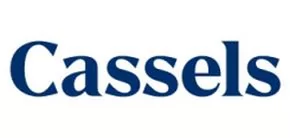- within Intellectual Property topic(s)
- with Senior Company Executives, HR and Finance and Tax Executives
- in Canada
- with readers working within the Banking & Credit, Consumer Industries and Law Firm industries
Oasis is kicking off the North American leg of their long-awaited reunion tour. Their initial shows in the UK and Ireland thrilled fans, but photojournalists were less impressed.
The band's management imposed a controversial condition: photographers could shoot the shows only if they agreed to a 12-month limit on the use of their photos. In response, the News Media Coalition announced that several of its members, including Getty Images, Reuters, and AFP, were suspending coverage of the tour. The News Media Coalition stated that Oasis' restrictions "pose[d] challenges to the preservation of cultural and historical records, and may undermine the public's access to independent journalism."1
This dispute has illuminated a long-standing issue in the live music industry: ownership and usage of concert photos and the restrictions that photographers accept in exchange for access.
Who Owns the Shot? The Photographer or their Employer
Under Canadian copyright law, the author of a work is the first owner of copyright in it, as set out in section 13(1) of the Copyright Act.2
In the context of concert photography, this means that the photographer (not the artist, venue, or promoter of a concert) owns the copyright in the photos they shoot. This principle was affirmed in Gould Estate v. Stoddart Publishing Co.,3 where the Court held that the subject of a photograph, even if they are a world-famous artist like Glenn Gould, had no proprietary interest in the image.
Section 13(3) of the Act carves out a key exception: if a work is created by an employee in the course of their employment, their employer owns the copyright unless the parties have agreed otherwise. This applies to staff photographers employed by media outlets, but not to freelancers. Courts have consistently upheld that independent contractors retain copyright in their work unless they have assigned it in writing. The distinction between employee and contractor is therefore critical.4
Photographers can assign their copyright, but only by signed, written agreement.5
Accreditation and Access to Concerts
While concert attendees often photograph and record the artists via cell phones, venues typically restrict attendees from bringing in professional photography equipment, including camera bodies and detachable lenses.
In such circumstances, the only photographers allowed into the venue with professional equipment are those who have applied for accreditation from the artist, the venue, or both. This accreditation allows access to the "photo pit" at the front of the stage.
Accredited photographers are expected to observe basic rules, such as not using flash, not capturing video, staying out of the way of security, and leaving the "photo pit" after three songs.
Agreements between Performing Artists and Photographers
Famous touring acts often require photographers to sign agreements before providing accreditation and access to the photo pit. These agreements may restrict the photographer's use of their photos to editorial purposes, prohibit the sale of prints, require approval of photos by the artist before release, or provide usage rights to the artist.
As happened with Oasis, these agreements will sometimes make headlines when photographers object to the terms the artist seeks to impose. For instance, the Foo Fighters sought a full assignment of copyright without compensation or even a guarantee of credit,6 and Taylor Swift sought the right to confiscate or destroy photographers' equipment if they failed to comply with the agreement.7
While photographers and news organizations may bristle at these limitations on their rights, famous touring acts and their management teams take the position that the terms of their photography agreements are a fair trade-off for the access the photographer will receive in return.
Further Considerations
In addition to any contractual usage restrictions imposed by the artist, photographers must remember that owning copyright in a photo does not give them absolute free rein over its use.
If a photo includes someone else's intellectual property – for example, stage visuals, artwork, logos, or the artist's likeness – that person may allege that the photo infringes copyright or trademark or misappropriates their personality. Such allegations are more likely to arise if the photo is used for commercial purposes, such as being reproduced for profit, featured on merchandise, or used in a way that implies an endorsement of a product or service.
Editorial use of someone else's work may be protected under the fair dealing provisions of the Copyright Act. In Allen v. Toronto Star Newspapers Ltd.,8 the Court upheld the editorial use of a magazine cover in a news article as fair dealing. However, fair dealing is necessarily a case-by-case exception that depends heavily on the particular use at issue.
"And After All...": Final Thoughts
Concert photographers and musical artists each benefit from the other's work.
While artists are entitled to contemplate what they believe is a fair trade for the access they provide the photographers, photographers need to consider the relative importance of access, compensation, copyright ownership, and notoriety. Both parties need to understand where the boundaries lie (both in law and in practice) when it comes to the resulting photographs and their use.
Footnotes
1. News Media Coalition. "Oasis Tour Photo Restrictions Impact Scope and Visibility of News Coverage" 15 July 2025, https://www.newsmediacoalition.org/oasis-tour-photo-restrictions-impact-scope-and-visibility-of-news-coverage/.
2. Copyright Act, RSC 1985, c C-42.
3. Gould Estate v. Stoddart Publishing Co., [1998] O.J. No. 1894 at paras. 16-17, 24-26.
4. See Pinto v. Bronfman Jewish Education Centre, 2013 FC 945 where the defendants acknowledged that the plaintiff was a contractor, not an employee. In contrast, GE Renewable Energy Canada Inc. v. Canmec Industrial Inc., 2024 FC 322, confirmed employer ownership where the creator was an employee.
5. Section 13(4) of the Copyright Act.
6. Zhang, Michael. "Newspaper Rejects Foo Fighters Photo Contract, Will Buy Fan Photos Instead." PetaPixel, 3 July 2015, https://petapixel.com/2015/07/03/newspaper-rejects-foo-fighters-photo-contract-will-buy-fan-photos-instead/.
7. Zhang, Michael. "Taylor Swift Photo Contract: Break Our Rules, and We Can Break Your Gear" PetaPixel, 23 June 2015, https://petapixel.com/2015/06/23/taylor-swift-photo-contract-break-our-rules-and-we-can-break-your-gear/.
8. Allen v. Toronto Star Newspapers Ltd., [1997] O.J. No. 4363.
The content of this article is intended to provide a general guide to the subject matter. Specialist advice should be sought about your specific circumstances.



